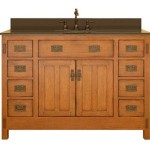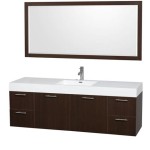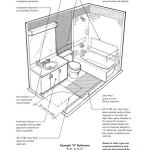How To Hide Bathroom Waste Pipes
Bathroom waste pipes, essential for carrying away wastewater, can sometimes be an eyesore. Exposed pipes can detract from the aesthetic appeal of a bathroom, especially if the design is modern or minimalist. Fortunately, there are several effective strategies for concealing these plumbing fixtures, enhancing the visual appeal and functionality of your bathroom. This article will explore various methods for hiding bathroom waste pipes, offering practical advice and considerations for a seamless and elegant solution.
Utilizing Enclosures and Walls
One of the most common and effective approaches to hiding bathroom waste pipes is by constructing enclosures or building walls around them. This method offers a comprehensive solution, effectively concealing the pipes from view. There are several options to consider within this approach, each with its own advantages and disadvantages.
1. Custom-Built Enclosures:
Custom-built enclosures provide the most tailored approach. You can choose the desired material, size, and design to seamlessly integrate the enclosure with the bathroom's existing decor. This allows for complete flexibility in terms of aesthetics and creates a clean and organized look.2. Prefabricated Enclosures:
For a more economical and faster solution, prefabricated enclosures are readily available in various styles and materials. These enclosures often come with doors or panels, allowing for easy access to the pipes for maintenance or repairs.3. Drywall Walls:
Building a drywall wall around the exposed pipes is a simple and cost-effective option. This method efficiently conceals the pipes and allows for the creation of additional storage space or a niche within the bathroom. However, this approach requires some construction expertise and careful planning to ensure proper ventilation and access to the pipes.Enhancing Aesthetics with Decor and Accessories
Instead of completely hiding the pipes, you can incorporate them into the bathroom's design by using decorative elements and accessories. This approach offers a visually appealing solution, adding character and personality to the space.
1. Decorative Panels:
Panels made from wood, tile, or other materials can be applied directly over the pipes, transforming them into a design feature. These panels can be painted or stained to match the bathroom's existing color scheme, seamlessly blending the pipes into the environment.2. Plants and Greenery:
Strategically placed plants or greenery can effectively camouflage the pipes, adding life and freshness to the bathroom. Choose plants that thrive in moist environments and are tolerant of low light conditions, ensuring their longevity and aesthetic appeal.3. Bathroom Accessories:
Adding decorative bathroom accessories, such as mirrors, shelves, or towel racks, can strategically cover the pipes, diverting attention from them. This method allows for creative expression and customization, effectively camouflaging the pipes while enhancing the overall aesthetics of the bathroom.Strategic Placement and Access
When concealing bathroom waste pipes, it's crucial to consider accessibility for maintenance and repairs. While concealment is important, ensuring easy access to the pipes is equally critical. This helps prevent potential issues and facilitates timely repairs when necessary.
1. Access Panels:
Installing access panels within enclosures or behind decorative elements allows for easy inspection and maintenance of the pipes without compromising the aesthetics. These panels should be secured with readily removable fasteners for convenient access.2. Strategic Piping Routes:
When possible, consider rerouting the pipes to more discreet locations. This might involve adjustments during renovation or new construction. Careful planning and consultation with a plumber are essential to determine the feasibility of this approach.3. Ventilation:
Ensuring adequate ventilation around the pipes is crucial to prevent moisture buildup and potential mold growth. Ventilation can be achieved through small openings or vents within enclosures or behind decorative elements. This allows for air circulation, minimizing the risk of moisture-related problems.In Conclusion, effectively hiding bathroom waste pipes requires a thoughtful approach that considers factors such as aesthetics, functionality, and accessibility. Various methods can be employed, from constructing enclosures to incorporating decorative elements, each offering unique advantages and disadvantages. Careful planning and consultation with professionals can help you determine the most suitable approach for your specific bathroom space and design preferences.

How To Hide Plumbing In Your Bathroom Victoriaplum Com

An Interview With A Master Plumber And 3 Creative Ways To Hide Exposed Pipes Nir Plumbing

Boxing In Bathroom Pipework Guru

Help Hiding Pipes In Downstairs Toilet Houzz

5 Ways To Conceal A Waste Pipe Under Vanity The Plumbette

6 Creative Ways To Hide Exposed Pipes By Bathroom Experts Showers You

How To Hide Pipes Behind A Toilet Checkatrade

How To Hide Pipes In A Bathroom For Sinks Toilets Checkatrade

Ask A Builder Hiding Pipes

How To Hide Plumbing Pipes In Your Bathroom Big
Related Posts







